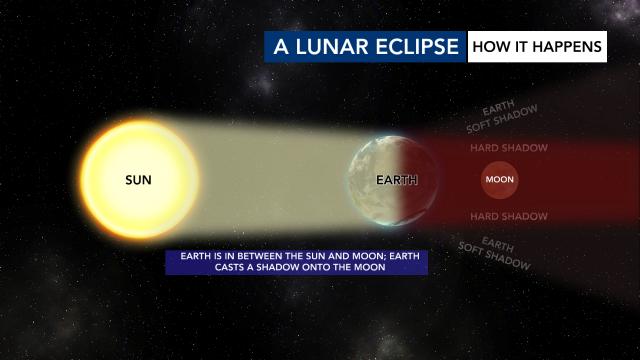
The most recent lunar eclipse visible in North Carolina occurred in November 2022. Residents in the area are eagerly anticipating the next opportunity to witness this celestial event, which will take place overnight from March 13 to March 14.
Before diving into the specific timings for the upcoming eclipse, let’s first explore what a lunar eclipse is and outline its various stages.
Understanding a Lunar Eclipse
A lunar eclipse transpires when Earth positions itself directly between the sun and the moon. During this phenomenon, the moon acts like a screen onto which all of Earth’s sunsets are cast, resulting in the captivating red glow often observed during a total lunar eclipse.
Here’s a glimpse of how the event looked in November 2022.
Stages of a Lunar Eclipse
During a lunar eclipse, Earth casts two types of shadows on the moon. The outer, softer shadow is known as the penumbra, while the inner, darker area is called the umbra. A partial lunar eclipse occurs when only a portion of the moon passes through the umbra. In contrast, a total lunar eclipse happens when the moon is entirely within the umbra, often referred to as a “blood moon.”
Upcoming Lunar Eclipse on March 14, 2025
Unfortunately, this lunar eclipse may not occur at the most convenient hours for everyone.
The partial eclipse will commence at 1:09 a.m. EDT on Friday, March 14, marking the moment when the moon starts to enter Earth’s umbra.
At 2:26 a.m. EDT, the entire moon will take on a reddish tint.
The partial eclipse will conclude at 4:47 a.m. EDT, after which the moon will gradually transition out of Earth’s penumbral shadow.
For a detailed timeline of the March 14 eclipse, check NASA’s comprehensive guide here.
Future Lunar Eclipses on the Horizon
As per NASA’s Goddard Space Flight Center, several lunar eclipses are expected between now and 2030, but visibility will vary based on your location.
The next total lunar eclipse visible from North Carolina won’t be until August 2026, as detailed in this table.














